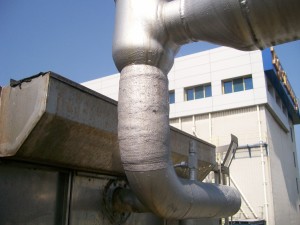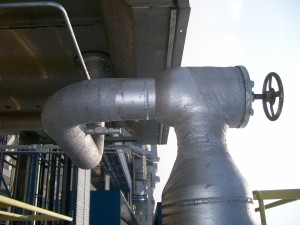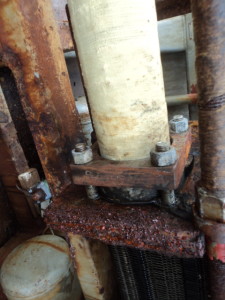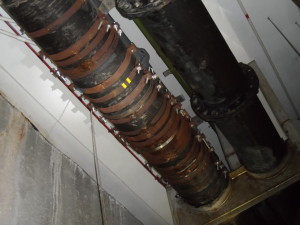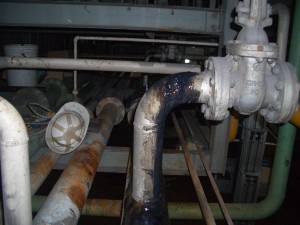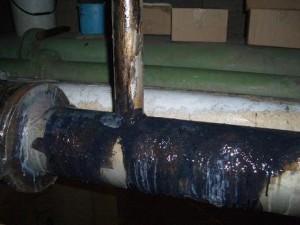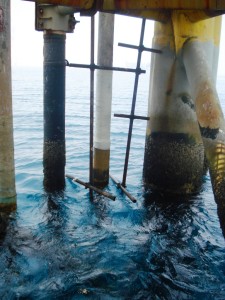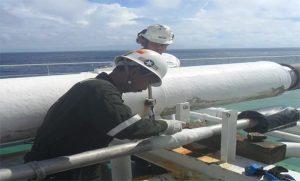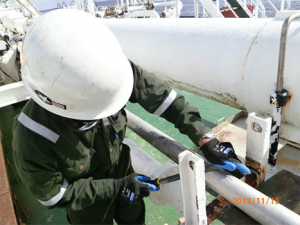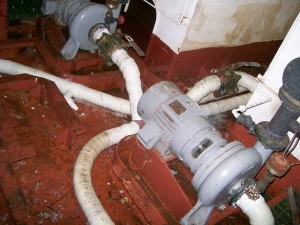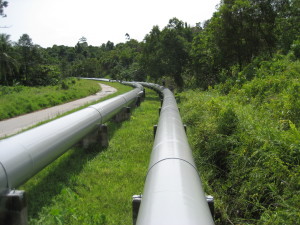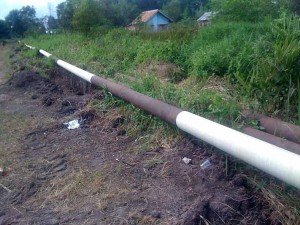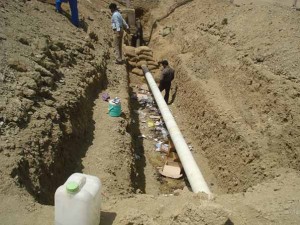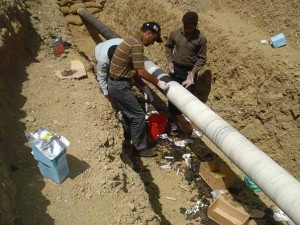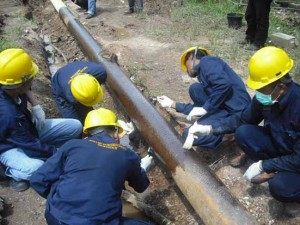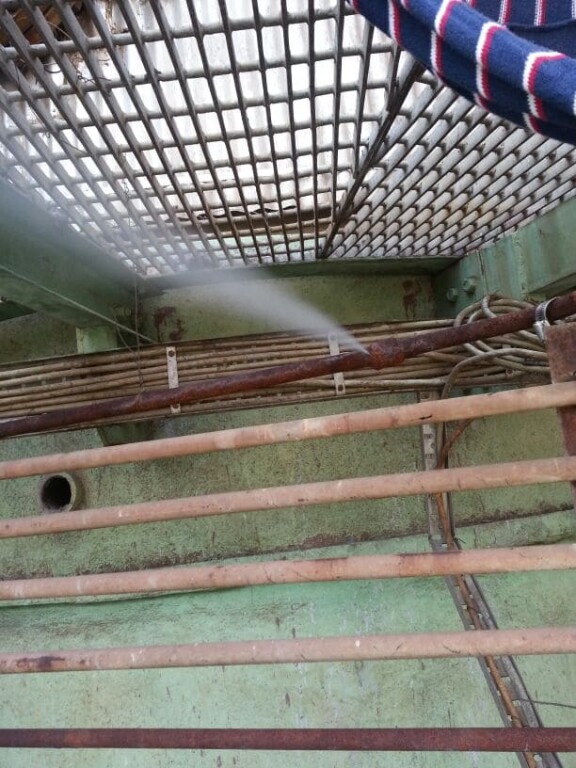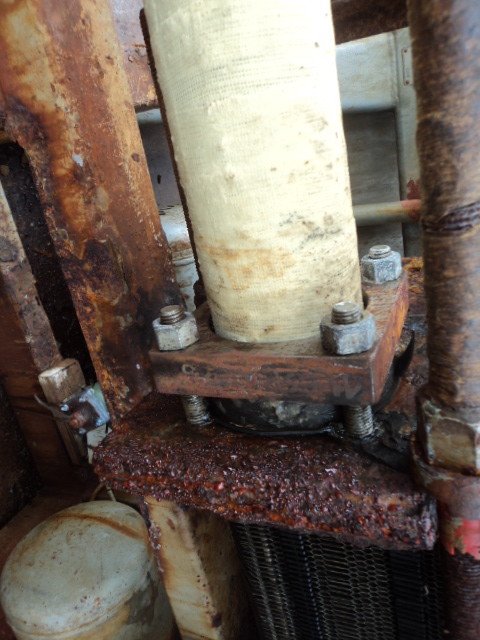
Surface preparations for an Effective Anti-corrosion Coating
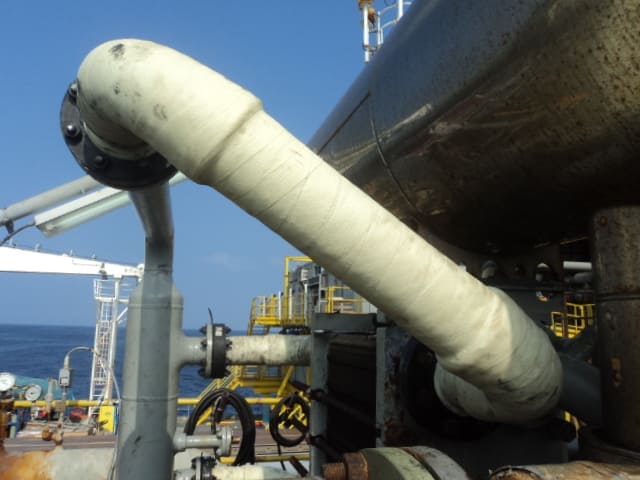
Introduction
Good surface preparation may be considered to be the most important part of the entire coating process in that the greatest percentage of coating failures can be traced directly to poor surface preparation. All paint or anti-corrosion coating systems will fail prematurely unless the surface has been properly prepared to receive the coating. If contaminants such as loose rust, oil, grease, dirt, salts, chemicals, dust, etc. are not removed from the surface to be coated, adhesion will be compromised and/or osmotic blistering will occur in addition to premature failure of the coating in service. No paint or anti-corrosion coating system will give optimum performance over a poorly prepared surface.
Surface cleanliness
The extent to which a surface is made clean before the coating is applied, is a balance between the expected performance of the coating, the paint manufacturer’s recommendations, the time available for the job, the relative cost of the various surface preparation methods available, access to the area to be prepared and the condition of the steel prior to surface preparation. In many instances, coatings cannot be applied under ideal conditions, especially under repair and maintenance conditions. The quality of surface cleanliness achieved (or it is possible to achieve) will be very different for an un-corroded high quality steel plate with tightly adherent mill-scale, with poorly adherent coating, loose rust scale and heavy pitting.
Any substance which prevents a coating from adhering directly to the steel can be considered a contaminant. Major contaminants include:
• Moisture or water
• Oil and grease
• Salt and other Ionic species from the nearby sea and industrial areas
• White rust (zinc salts from weathered zinc silicate shop primers)
• Weld spatter
• Weld fume
• Cutting fume
• Burn through from welding on the reverse side of the steel
• Dust and dirt from the yard site and from neighbouring industrial processes
In maintenance and repair situations, the presence of pitting, corrosion products, cathodic protection products, aged coatings and trapped cargoes, etc., must also be considered, particularly if only localized surface preparation of the most severely affected areas is being carried out prior to re-coating.
Surface cleaning and conditioning
There are many methods available for cleaning and preparing steel surfaces prior to painting. The choice of preparation method will depend upon the repair areas to be prepared and the equipment available. On board maintenance may involve abrasive or water blasting, power and/or hand tool preparation depending upon the size and location of the area to be prepared and painted. As with edge preparation, a higher standard of surface preparation will result in a longer and more effective coating performance. One of the major causes of coating blistering is the presence of retained soluble material, such as salt, on metal surfaces before painting. For some types of paint, such as chemical, cargo and ballast tank coatings, the level of soluble salts present is crucial to the long term performance of the coating. While salts are easily removed from flat surfaces by water washing, it is the salts which become trapped in cracks in the coating, under old paint and rust and in pits in the steel surface that are more difficult to remove and can be problematic. Such residual salts will cause blistering or detachment of the new coating, if not removed. High pressure water washing will remove the majority of these trapped salts, if carried out effectively. Paint manufacturers specify the maximum level of soluble salts which may be present on the surface before the coating application and these will vary depending upon the paint itself and its service environment.
Solvent cleaning
This is a process of using solvents or other cleaning compounds, to remove oil, grease and other similar contaminants. This process is best utilized as a preliminary step in the total surface preparation procedure, since subsequent cleaning processes, such as abrasive blasting, may simply spread some of the contaminants more thinly over the surface rather than completely removing them.
Although widely used, solvents are not necessarily the preferred cleaner recommended by paint companies for large areas of contaminants, as they may become an impediment rather than a help if not properly removed. A proprietary, water soluble, oil and grease remover followed by plentiful fresh water washing would be the preferred method of achieving this standard. Care must be taken that the cleaner does not leave any ionic residues on the surface, particularly if the fresh water washing is limited to the use of buckets of water and cloths.
If solvent cleaning is chosen then safety is very important. Adequate ventilation and minimizing potential fire hazards are paramount. Clean-up rags should be changed often to prevent smearing, and two or three solvent applications may be necessary. Brush application should be avoided, or the oil will simply spread over a larger area.
Abrasive blasting
This is the most commonly used method of preparing a surface for the application of. When properly carried out, abrasive blasting removes old paint, rust, salts, fouling, etc., and provides a good mechanical key (blast profile) for the new coating. The surface should be degreased if necessary before abrasive blasting. Weld spatters and deposits should also be removed before blasting. After the abrasive blasting is completed, the surface must be cleaned to remove loose debris and dust before painting commences.
Blast profile
It is important that the correct blast profile is achieved before the substrate is coated. Paint manufacturers should specify the blast profile for each coating, in terms of the anchor pattern required for that paint. In general, thicker coatings will require a profile with a greater peak to trough measurement than a thin coating. If too high, a blast profile is produced. Inadequate coating coverage will result over any high and sharp peaks and this could lead to premature coating breakdown. However, abrasive blasting can also result in an insufficient surface profile and may simply re-distribute contamination over the steel surface trapping contaminants under the surface.
If the blast profile is too shallow or the surface is insufficiently blasted to produce a uniform blast profile, the adhesion of the coating to the metal will be reduced and early failure in service can result. There are several methods for assessing the blast profile characteristics, such as test tapes, comparator gauges, rugotest gauges, etc. If the blasting media is contaminated, the quantity of soluble salts remaining on the steel surface after blasting can be higher than before blasting. The quantity of soluble salts in blasting media can be checked by aqueous extraction techniques.
Soluble contaminants remaining on a surface should be quantified using commercially available tests to ISO 8502-6 and further surface preparation work should be carried out, if necessary, until the specified cleanliness standards are achieved. Coating manufacturers’ representatives and relevant personnel can perform these tests when necessary.
Spot blasting
Spot blasting is an abrasive, localized preparation process commonly used on the outside of ships hulls during repair and maintenance work, when patches of localized corrosion have occurred. Care must be taken to avoid the following problems:
• Undercutting and loosening of paint edges around the cleaned spot.
• Stray abrasive particles (ricochet damage) will damage surrounding paint in confined spaces and this must be treated and repaired as necessary.
• Blasting should be discontinued when moving from one spot to the next rather than trailing blast media over the surface. Any damage caused in this way should be repaired.
Sweep blasting
A jet of abrasive is swept across the surface of the steel rather than being focused on one area for any period of time. Its effectiveness depends upon the type and particle size of the abrasive used the condition of the surface and the skill of the operator. Three major types of sweep blast are in common use:
• Light sweeping is used to remove surface contamination or loose coatings. It is also used for etching of existing coatings to improve adhesion. Fine abrasive (0.2-0.5mm) is commonly used for light sweep blasting.
• Heavy or hard sweeping is used to remove old coating, rust, etc., back to the original shop primer or bare steel.
Hydro blasting/water jetting
While dry abrasive blasting is the most commonly used method of surface preparation, government and local regulations are continuously changing and require the development of more environmentally-sensitive and user-friendly methods of surface preparation. The use of hydro blasting (also known as hydro jetting, water blasting and water jetting) is becoming an increasing viable means to accomplish this. ASTM F20-16-00 (2006), SSPC-SP12 and NACE No.5 all include information on water jetting. It should be noted that water blasted surfaces are visually very different from those produced by abrasive cleaning or power tools and surfaces often appear dull or mottled after the initial cleaning is completed. One drawback of water blasting is the formation of flash rust (also called flash back or gingering) after blasting. Heavy rust formed in a short time period is indicative of residual salt on the steel and re-blasting is necessary before painting. Light rusting is generally acceptable to the paint manufacturers, subject to the coating to be applied and the area in which it will be used. Water blasting does not produce a profile on the steel surface as compared with abrasive blasting. It does however remove rust and loose paint, as well as soluble salts, dirt and oils, from the steel to expose the original abrasive blast surface profile plus the profile produced by corrosion and mechanical damage. The use of ultra-high pressure water blasting can also remove adherent paint from steel.
The terms water washing (usually used to remove salts, slimes and light fouling from vessels in dry dock) and water blasting (used to remove rust and paint) can easily become confused. To clarify the situation, the following pressure guidelines are given:
• Low pressure water washing/cleaning: pressures less than 1,000 psi (68 bar)
• High pressure water washing/cleaning: pressures between 1,000 and 10,000 psi (68-680 bar)
• High pressure water blasting: pressures between 10,000 and 25,000 psi (680-1700 bar)
• Ultra high pressure water blasting: pressures above 25,000 psi (1700 bar).
Most machines operate in the 30,000 –36,000 psi (2000-2500 bar) range Inhibitors can sometimes be added to the water to help prevent flash rusting prior to coating being applied, however they are often ionic in nature and must be completely removed by further washing before the paint is applied. It is also important to ensure that the water being used should be sufficiently pure so that it does not contaminate the surface being cleaned. The use of slurry blasting, where an abrasive is included in the water stream, is also popular in some locations. This has the advantage of producing a profile on the steel as well as washing away soluble salts.
Power tool cleaning
The effectiveness of cleaning using power tools rather than abrasive or water blasting methods depends on the effort and endurance of the operator as working above shoulder height is especially tiring. Some of the more popular methods are as follows:
(1) Rotary power disking
This one is the most commonly used surface preparation methods for the majority of on-board maintenance situations. It is also widely used at new building for the preparation of welds and cut edges prior to painting. Normally, silicon carbide disks are used and the grade selected to suit the conditions of the surface to be abraded. It is important to change the discs at regular intervals in order to maintain efficiency. Care should be exercised in the selection of the grit size and type of disk to be utilized, so that the surface is not excessively smoothed, thereby reducing the ability of the paint to adhere. Irregular and pitted surfaces may require a combination of the various power tool cleaning methods to maximize effectiveness. Power disk preparation is also widely used for edge and weld preparation and is used in some new building for the preparation of all block surfaces prior to coating (as blasting is only used for plate preparation prior to shop primer application). A similar alternative is using a belt grinder, as shown in Photograph 4-6.
(2) Mechanical de-scaling
Needle guns, Roto-Peen and other pounding-type instruments are effective to some degree in removing thick rust and scale and are frequently used for maintenance of vessels in service. The action of these types of devices is dependent upon cutting blade or point pounding the surface and breaking away the scale. Cleaning is only effective at the actual points of contact. The intermediate areas are only partially cleaned, because the brittle scale disintegrates, but the lowermost layer of rust and scale remains attached to the substrate.
(3) Rotary wire brushing
This method has some merits, depending upon the condition of the surface. Loose “powdery” rust can be removed, but hard scale rust will resist the abrasion of the wire bristles. When rust scale is intact and adherent to the substrate, rotary wire brushing tends to merely burnish or polish the surface of the rust scale, but does not remove it. Care should be exercised, in that the burnished surface may give the appearance of a well cleaned surface, which is often misleading.
(4) Hand tool cleaning
This method is the slowest and usually the least satisfactory method of surface preparation. It is frequently used in confined areas where power tool access is not possible. Scrapers, chipping hammers or chisels can be used to remove loose, non-adherent paint, rust or scale but it is a laborious method and very difficult to achieve a good standard of surface preparation. Wire brushing can make the surface worse by polishing rather than cleaning the rusted surface. Soluble salts, dirt and other contaminants are frequently trapped and over-coated, leading to early paint breakdown.
Pickling
In new buildings, an acid pickling process can be used for the preparation of small items before coating. The items, such as pipes, are alkali cleaned followed by a wash and then an acid pickling bath to remove rust. Thorough washing must take place to remove all the acid, particularly if the item is to be painted, as shown in Photograph 4-8.
Preparation of non-ferrous metals
(1) Galvanized steel
The surface must be dry, clean and free from oil and grease before painting. Degreasing requires some effort to obtain a clean surface, as the zinc corrosion products can trap grease and other contaminants. Any white zinc corrosion products should be removed by high pressure, fresh water washing or fresh water washing with scrubbing. Sweep blasting or abrading are suitable preparation methods, but fresh water washing should be used additionally to remove soluble salts. An etch primer can also be used after cleaning to provide a key for further coatings. Paint companies should be consulted on suitable preparation methods, primers and coatings for galvanized steels and will advise on individual cases.
(2) Aluminum
The surface should be clean, dry and free from oil and grease. Corrosion salts should be removed by light abrasion and water washing. Clean surfaces should be abraded or very lightly blasted using a low pressure and a non-metallic abrasive (e.g. garnet). Alternatively, a proprietary etch primer should be used to provide a key for subsequent paint coats. Paint companies should be consulted regarding suitable primers and coatings.
